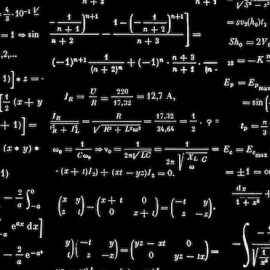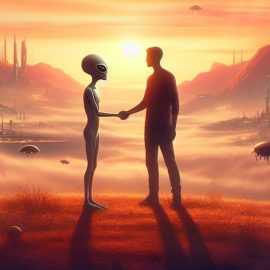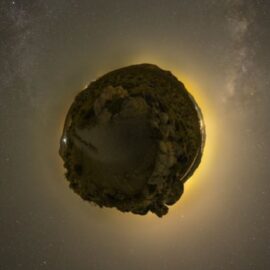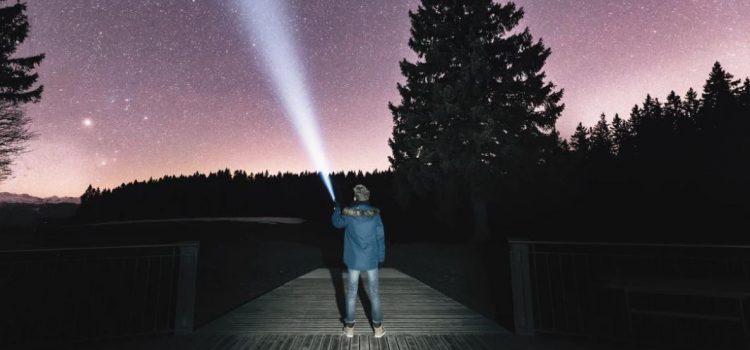
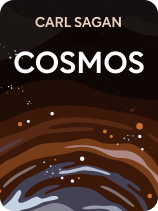
This article is an excerpt from the Shortform book guide to "Cosmos" by Carl Sagan. Shortform has the world's best summaries and analyses of books you should be reading.
Like this article? Sign up for a free trial here .
Is there intelligent life on other planets? What might that life look like?
According to famous astronomer Carl Sagan, there is likely life on other planets, but the odds of it being intelligent are very small. However, if there are complex lifeforms out there, they’re probably nothing like we imagine.
Here’s what Carl Sagan had to say about life on other planets.
Evolution on Other Planets
Is there intelligent life on other planets? Sagan says it’s certainly possible. The gasses from which the first living molecules formed exist everywhere in the universe. However, for 3 billion years, life on Earth never evolved past blue-green algae, so Sagan points out that evolving large complex life forms is much harder than the origin of life itself. Therefore, he says that if there is life on other planets, it’s more likely to be simple organisms, because the time required to evolve complex intelligent life means that, statistically, the majority of life in the universe would be in some stage of evolution preceding the complex life form stage.
However, it’s certainly possible that there are some planets on which life has been evolving as long as it has been on Earth, or even much longer. Sagan speculates that life forms that have evolved much longer than humans may become extinct (for various reasons including self-destruction, which he argues is happening with humans), leaving only a relatively small time window, on the cosmic scale of time, for multiple forms of complex, intelligent life to exist simultaneously.
| The Probability of Intelligent Life The probability for how many intelligent life forms exist in the universe has been calculated using what’s called the Drake Equation. While it can only be estimated, not effectively “solved,” the Drake Equation suggests the number of intelligent life forms existing in the universe could be as high as several million, and as low as one. It might just be us. In The Sixth Extinction, Elizabeth Kolbert describes the evolutionary timeline of life on Earth as a series of long phases of stability, alternating with rapid calamitous changes. These calamities (including drastic climate shifts and asteroids) have caused five periods of mass extinction, each resulting in the disappearance of around 75-95% of the species on Earth. Kolbert argues that the sixth era of mass extinction is underway, caused by the environmental effects of human activities. It’s possible that in this wave, humans could be one of the species to become extinct, and of all the species that have evolved on Earth, we’re the only one that has evolved the intelligence to be able to communicate with extraterrestrial beings. Because of our risk of extinction, even if another intelligent life form arises, the chance that we’ll both exist and have the capabilities to communicate with one another at the same time is slim. |
Sagan also points out that life elsewhere in the cosmos is probably nothing like we imagine, because our imaginations are limited by what we know. Given the many possibilities in the way molecules can combine, along with the vast possibilities for how characteristics could evolve, Sagan says that any life that has evolved elsewhere would most likely be out of our realm of imagination.
(Shortform note: Astronomer and “space artist” David Aguilar created a children’s book for National Geographic, depicting some possibilities for what extraterrestrial life could look like. While nobody can really know the answer to this, what’s unique about Aguilar’s depictions is that he used scientific knowledge about the atmospheres and environments such beings would need to adapt to, in order to imagine what kinds of features they might have.)

———End of Preview———
Like what you just read? Read the rest of the world's best book summary and analysis of Carl Sagan's "Cosmos" at Shortform .
Here's what you'll find in our full Cosmos summary :
- Carl Sagan's insights into some of the universe's biggest questions
- The history of astronomical discovery, from ancient Ionia to 1980
- Why humans will need “multigenerational” spacecrafts to explore space


